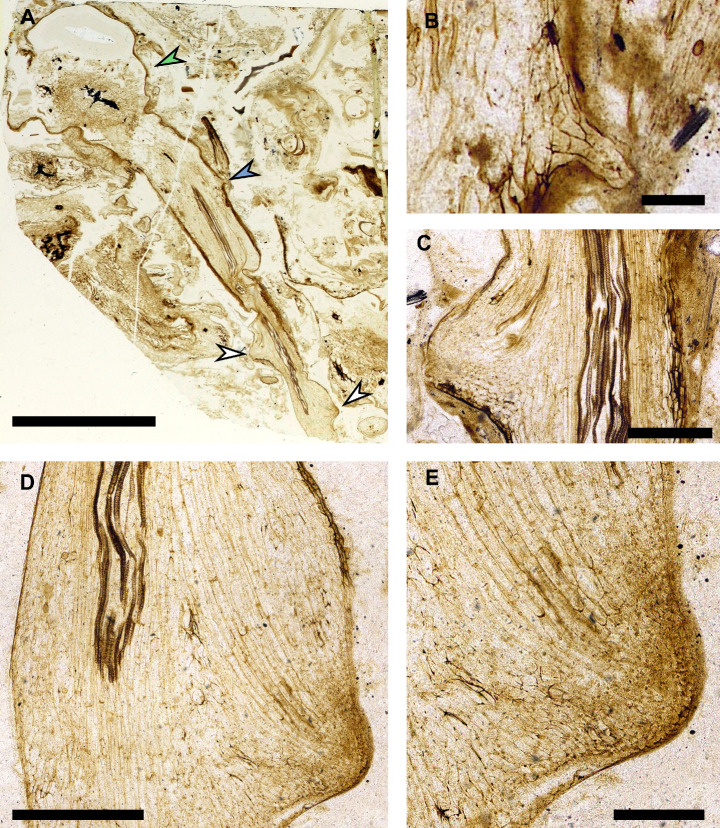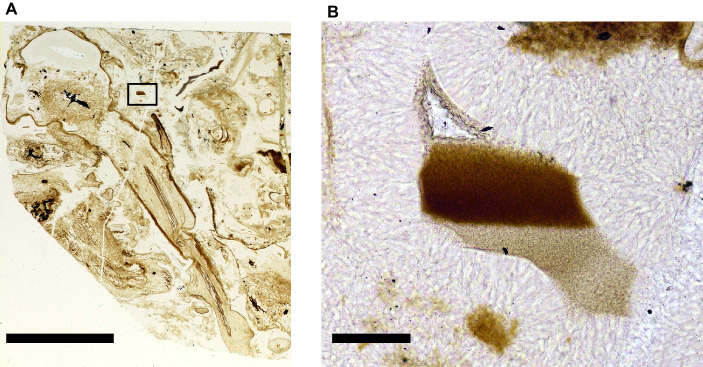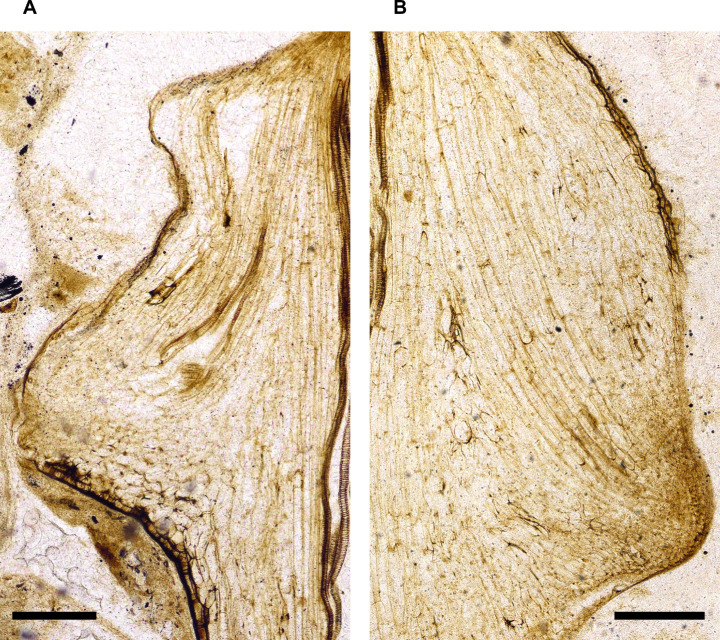Figure 5. Fossilised meristems preserve evidence that rooting axes developed from root-bearing axes by anisotomous dichotomy.
(A–E) A. mackiei axes preserving connection between a leafy shoot axis, root-bearing axis and two rooting axes apices. (A) Photograph of thin section NHMUK 16433 showing a large A. mackiei axis with stellate xylem cut in transverse section in the top left and highlighted with the green arrowhead, and attached root-bearing axis. On the root-bearing axis (A) the position of a scale leaf (B), is highlighted with a blue arrowhead and the two rooting axes meristems are highlighted with white arrowheads. (C–E) Rooting axis meristems marked by white arrowheads in (A) the left arrowhead (C) and right (D, E). (D) Well-preserved rooting axis meristem showing continuous cell files from the central vascular trace into the apex, the tissues of the rooting axis are continuous with the root-bearing axis indicating that development was by anisotomous dichotomy. Scale bars, 5 mm (A), 0.5 mm (C, D) 0.2 mm (B, E). Specimen accession codes: NHMUK 16433 (A–E).



